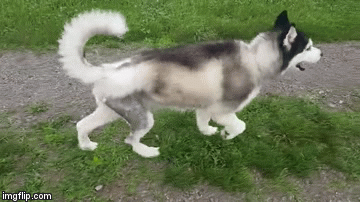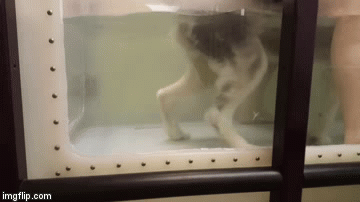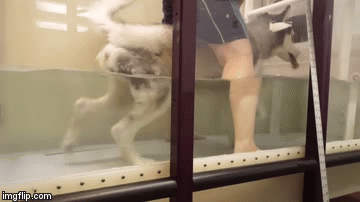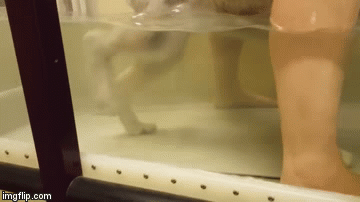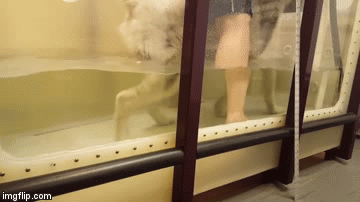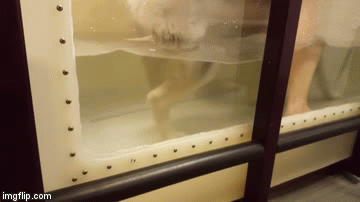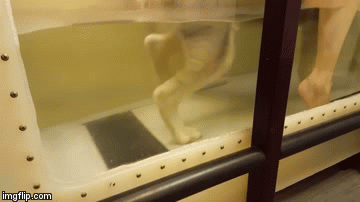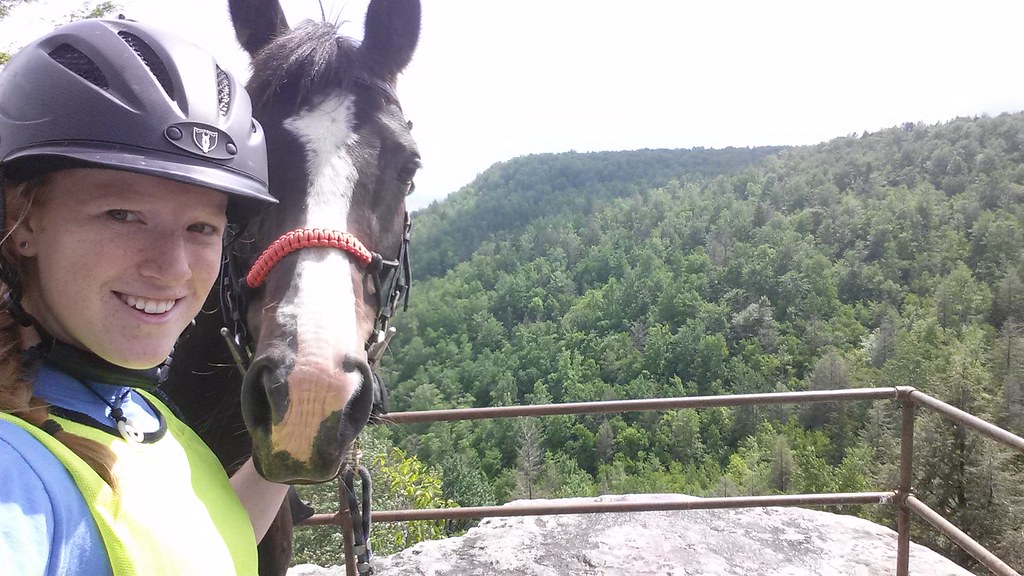Quick Backstory
Q was out of work for close to a year due to persistent "offness" in August 2016. September 19 will mark one year since the diagnosis of lesions to her left hind suspensory ligament. (Delay on diagnosis because last summer was a Very Bad Year for abscesses and she did indeed blow one or two after I noticed she was off; unfortunately, she was still NQR after the abscesses blew.)Other than routine ultrasounds to check the healing progress (markedly improved each time!), I did nothing special to help Q heal. The biggest thing I did was to give her time; soft tissue takes a long time to heal, so it seemed prudent to provide that time. I simply turned her out with her herd mates on their 28 acre pasture. Stalling wasn't really an option as she fusses and frets in a stall and would have done more damage to herself. In the field, she was docile and my BO (who watches the herd from her house) noted that Q didn't even play/trot/run with the herd for several weeks.
From accounts of other endurance riders who have dealt with this injury on their own horses, the time-off-with-a-year-of-turnout approach seemed the best bet for a successful return to work/competition. In fact, one of the other local endurance riders had a horse who dealt with this injury twice (more severe than Q's). She gave him a year off each time before bringing him back into work slowly, and he just finished 3rd at the AERC National Championship 50 and earned Best Condition. I'm hopeful Q will return to former work levels with time.
Current Plan
We're focusing on easy walk-trot "trail" rides and walk-trot dressage work for now (trail is limited to the field, road, and ¼-mile connecting trail between them because we don't have our trail access anymore) . These easy, slow and steady rides are helping her brain to build back the confidence she once had under saddle. Fortunately, this approach is also just what her body needs, too, if not a little more conservative - which isn't a bad thing at all.As we have re-entered our riding, I've made the decision to pursue a significant tack change away from my treeless Ansur. A change to a treed saddle was necessary so Q and I couldn't communicate as intimately moving forward. The close contact from my Ansur, while wonderful, was also detrimental for us. This mare and I feed off of each other's energy and I needed to put a block on that while also lending myself some added security for when she will inevitably spook.
Right now, we're bumming around in an old western Abetta saddle that's been hanging out in the tack room forever. It's working well so far, and the higher pommel and cantle help keep me more secure through her shenanigans. Bonus? I haven't yet gutted myself on the horn - a valid concern as I've definitely been tossed about and been "gut punched" before.
It's hard to remember when faced with more recent negative memories of this mare spooking like a total shithead, but she really didn't spook badly the first couple years I had her. Sure, she's a hot horse that is more likely to spook than a horse like Stan or Griffin, but her spooking wasn't extreme until 2015-2016.
Her downward spiral with the spooking behavior is absolutely due to my own behaviors, and I don't discount that for a minute. I slowly unloaded my own baggage on her in 2014 and it wasn't fair or right, but it's in the past. The best thing now is to do my due diligence and put in the work to help her return to her former "normal" and then, with luck, surpass it.
For better or worse, I have concluded that a lot of this horse's spooking the past few years is to get out of work. It wasn't originally, but boy-o has it evolved to be such. Since reaching this conclusion, it's been kind of entertaining for me to see when she spooks. She definitely tends to do it more as we're beginning work - especially if we are leaving the barn yard - or when she doesn't get "her way". Both indications of a horse who isn't so much scared as she is lazy!
Q's only given me a "true spook" twice during the past month. Both times, I was only set off balance in the tiniest way. Through keeping my balance and not reciprocating any kind of response to her spooking or wiggling, Q is realizing her "game" is less fun to play. She isn't getting out of a damn thing and I'm not giving her any reason to react further. I'm such a party pooper! As a result, she isn't resorting to spooking like she used to and her general wiggling evasions are lessening; it's no fun when you're not winning!
Whether we are in the barnyard focusing on dressage or we're on the "trail", all of our rides are walk-trot with a lot of halting. In the beginning, any time Q tensed up about The World, I would stop her, face the offending "monster" (usually something right in front of her), praise her for standing still, and give her a peppermint from the saddle to alter her focus. As time went on and Q wasn't so fussy, the peppermints went away (3-4 rides later). Now when I halt her for a moment because she's tense, we just stand a couple seconds until she relaxes and then strike off forward once more. The tense moments are definitely fewer than they were a few weeks ago and she calms much more quickly after our halts.
After a month of riding, I have observed that Q is the wiggliest horse ever. Straight is not a term she abides by the majority of the time. She's the Queen of Counterbend when we do our dressage work and she wiggles all about on the trail. The wiggling isn't extreme, but compared to Stan or Grif, she's quite loose. As a result, my biggest goal at the moment is achieving more moments of solid straightness from her. That's a really easy goal to pair with the walk-trot-halting we've been doing!
This week has afforded the least counterbend so far in our dressage ride and the straightest, least wiggling ride so far in the field. Q really seems to be settling and we're having more moments of focus and relaxation than moments of tense and fussy. The fact that I can feel and notice a difference is huge!
Fortunately, while we have issues to work out under saddle still, Q's trust and the mutual understanding between the two of us has grown leaps and bounds over the last year on the ground. As a result, I can read her a lot better and know when to ignore, praise, or reprimand accordingly and can do so appropriately. This knowledge is facilitating the under saddle work, too, and I really think we are on a good path forward.
While it really sucks that she suffered the setback of this injury, I can be grateful that it has allowed this mare and I to finally come to a better understanding of each other. I am really optimistic for our future and hope to be back on the endurance trail next year with a horse that is stronger of both body and mind than she was before.
I try to find positive things in negative times - silver linings if you will. Has your horse ever suffered an injury setback that had a silver lining to it in the end? Or maybe an injury that resulted in a stronger bond between you and the horse after the rehab period was up?








